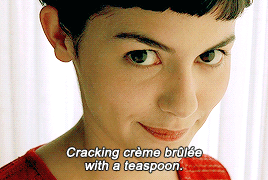Kootenai Falls, Montana By Liang Ge

Kootenai Falls, Montana by Liang Ge
More Posts from Smparticle2 and Others
Balancing Time and Space in the Brain: A New Model Holds Promise for Predicting Brain Dynamics
For as long as scientists have been listening in on the activity of the brain, they have been trying to understand the source of its noisy, apparently random, activity. In the past 20 years, “balanced network theory” has emerged to explain this apparent randomness through a balance of excitation and inhibition in recurrently coupled networks of neurons. A team of scientists has extended the balanced model to provide deep and testable predictions linking brain circuits to brain activity.
Lead investigators at the University of Pittsburgh say the new model accurately explains experimental findings about the highly variable responses of neurons in the brains of living animals. On Oct. 31, their paper, “The spatial structure of correlated neuronal variability,” was published online by the journal Nature Neuroscience.
The new model provides a much richer understanding of how activity is coordinated between neurons in neural circuits. The model could be used in the future to discover neural “signatures” that predict brain activity associated with learning or disease, say the investigators.
“Normally, brain activity appears highly random and variable most of the time, which looks like a weird way to compute,” said Brent Doiron, associate professor of mathematics at Pitt, senior author on the paper, and a member of the University of Pittsburgh Brain Institute (UPBI). “To understand the mechanics of neural computation, you need to know how the dynamics of a neuronal network depends on the network’s architecture, and this latest research brings us significantly closer to achieving this goal.”
Earlier versions of the balanced network theory captured how the timing and frequency of inputs—excitatory and inhibitory—shaped the emergence of variability in neural behavior, but these models used shortcuts that were biologically unrealistic, according to Doiron.
“The original balanced model ignored the spatial dependence of wiring in the brain, but it has long been known that neuron pairs that are near one another have a higher likelihood of connecting than pairs that are separated by larger distances. Earlier models produced unrealistic behavior—either completely random activity that was unlike the brain or completely synchronized neural behavior, such as you would see in a deep seizure. You could produce nothing in between.”
In the context of this balance, neurons are in a constant state of tension. According to co-author Matthew Smith, assistant professor of ophthalmology at Pitt and a member of UPBI, “It’s like balancing on one foot on your toes. If there are small overcorrections, the result is big fluctuations in neural firing, or communication.”
The new model accounts for temporal and spatial characteristics of neural networks and the correlations in the activity between neurons—whether firing in one neuron is correlated with firing in another. The model is such a substantial improvement that the scientists could use it to predict the behavior of living neurons examined in the area of the brain that processes the visual world.
After developing the model, the scientists examined data from the living visual cortex and found that their model accurately predicted the behavior of neurons based on how far apart they were. The activity of nearby neuron pairs was strongly correlated. At an intermediate distance, pairs of neurons were anticorrelated (When one responded more, the other responded less.), and at greater distances still they were independent.
“This model will help us to better understand how the brain computes information because it’s a big step forward in describing how network structure determines network variability,” said Doiron. “Any serious theory of brain computation must take into account the noise in the code. A shift in neuronal variability accompanies important cognitive functions, such as attention and learning, as well as being a signature of devastating pathologies like Parkinson’s disease and epilepsy.”
While the scientists examined the visual cortex, they believe their model could be used to predict activity in other parts of the brain, such as areas that process auditory or olfactory cues, for example. And they believe that the model generalizes to the brains of all mammals. In fact, the team found that a neural signature predicted by their model appeared in the visual cortex of living mice studied by another team of investigators.
“A hallmark of the computational approach that Doiron and Smith are taking is that its goal is to infer general principles of brain function that can be broadly applied to many scenarios. Remarkably, we still don’t have things like the laws of gravity for understanding the brain, but this is an important step for providing good theories in neuroscience that will allow us to make sense of the explosion of new experimental data that can now be collected,” said Nathan Urban, associate director of UPBI.

Sketching out magnetism with electricity
In a proof-of-concept study published in Nature Physics, researchers drew magnetic squares in a nonmagnetic material with an electrified pen and then “read” this magnetic doodle with X-rays.
The experiment demonstrated that magnetic properties can be created and annihilated in a nonmagnetic material with precise application of an electric field – something long sought by scientists looking for a better way to store and retrieve information on hard drives and other magnetic memory devices. The research took place at the Department of Energy’s SLAC National Accelerator Laboratory and the Korea Advanced Institute of Science and Technology.
“The important thing is that it’s reversible. Changing the voltage of the applied electric field demagnetizes the material again,” said Hendrik Ohldag, a co-author on the paper and scientist at the lab’s Stanford Synchrotron Radiation Lightsource (SSRL), a DOE Office of Science User Facility.
“That means this technique could be used to design new types of memory storage devices with additional layers of information that can be turned on and off with an electric field, rather than the magnetic fields used today,” Ohldag said. “This would allow more targeted control, and would be less likely to cause unwanted effects in surrounding magnetic areas.”
Read more.














Amélie doesn’t have a boyfriend. She tried once or twice, but the results were a let-down. Instead, she cultivates a taste for small pleasures.
There is a time when it is necessary to abandon the used clothes, which already have the shape of our body and to forget our paths, which takes us always to the same places. This is the time to cross the river: and if we don’t dare to do it, we will have stayed, forever beneath ourselves
Fernando Pessoa (via paizleyrayz)







“People who never met her except across the footlights did not realize how, in her private life, she had such compassion and interest in everyone. After I returned from Hong Kong I was ill with a virus and she rang me up reproachfully later to say, ‘Why didn’t you let me know? I would have come and sit with you.’ Giving flowers to sick people is easy. Giving that precious commodity time is far more expensive for someone who had such a full life. But she always found time for everyone.” -Godfrey Winn
Theodore Isaac Rubin, American Psychiatrist (via books-n-quotes)
Have you considered that if you don’t make waves, nobody including yourself will know that you are alive?
Wooahh....

-
 fantasymisfits reblogged this · 1 month ago
fantasymisfits reblogged this · 1 month ago -
 opxlescent reblogged this · 2 months ago
opxlescent reblogged this · 2 months ago -
 fplkk2022 liked this · 2 months ago
fplkk2022 liked this · 2 months ago -
 santacarlavamp1987 reblogged this · 2 months ago
santacarlavamp1987 reblogged this · 2 months ago -
 santacarlavamp1987 liked this · 2 months ago
santacarlavamp1987 liked this · 2 months ago -
 normalisboring-42 reblogged this · 2 months ago
normalisboring-42 reblogged this · 2 months ago -
 normalisboring-42 liked this · 2 months ago
normalisboring-42 liked this · 2 months ago -
 sweet-forest-dreams reblogged this · 2 months ago
sweet-forest-dreams reblogged this · 2 months ago -
 za1r0nith liked this · 3 months ago
za1r0nith liked this · 3 months ago -
 comfortpotato reblogged this · 4 months ago
comfortpotato reblogged this · 4 months ago -
 madewithonerib liked this · 6 months ago
madewithonerib liked this · 6 months ago -
 yetibattlerage reblogged this · 8 months ago
yetibattlerage reblogged this · 8 months ago -
 mystery-corner91 reblogged this · 9 months ago
mystery-corner91 reblogged this · 9 months ago -
 sarahssayings reblogged this · 9 months ago
sarahssayings reblogged this · 9 months ago -
 yourlocalcryptidinthewoods liked this · 9 months ago
yourlocalcryptidinthewoods liked this · 9 months ago -
 alpacaoverlord reblogged this · 10 months ago
alpacaoverlord reblogged this · 10 months ago -
 rednecktoreason liked this · 10 months ago
rednecktoreason liked this · 10 months ago -
 ttinnaa liked this · 10 months ago
ttinnaa liked this · 10 months ago -
 delostenor reblogged this · 10 months ago
delostenor reblogged this · 10 months ago -
 fromxxxxxxxxxxx liked this · 10 months ago
fromxxxxxxxxxxx liked this · 10 months ago -
 promiseofanewday reblogged this · 10 months ago
promiseofanewday reblogged this · 10 months ago -
 londonadayatatime liked this · 10 months ago
londonadayatatime liked this · 10 months ago -
 nostalgic-m3mories liked this · 10 months ago
nostalgic-m3mories liked this · 10 months ago -
 hiking-kiltsman reblogged this · 10 months ago
hiking-kiltsman reblogged this · 10 months ago -
 hiking-kiltsman liked this · 10 months ago
hiking-kiltsman liked this · 10 months ago -
 bambinaivitaet reblogged this · 10 months ago
bambinaivitaet reblogged this · 10 months ago -
 ginkg0ales reblogged this · 10 months ago
ginkg0ales reblogged this · 10 months ago -
 smunt-blokerr reblogged this · 10 months ago
smunt-blokerr reblogged this · 10 months ago -
 lavillanellex liked this · 10 months ago
lavillanellex liked this · 10 months ago -
 1911lobo41 liked this · 10 months ago
1911lobo41 liked this · 10 months ago -
 stormatus reblogged this · 10 months ago
stormatus reblogged this · 10 months ago -
 zahbdy reblogged this · 10 months ago
zahbdy reblogged this · 10 months ago -
 zahbdy liked this · 10 months ago
zahbdy liked this · 10 months ago -
 tattoovonbeardy reblogged this · 10 months ago
tattoovonbeardy reblogged this · 10 months ago -
 archetypal-integration reblogged this · 10 months ago
archetypal-integration reblogged this · 10 months ago -
 archetypal-integration liked this · 10 months ago
archetypal-integration liked this · 10 months ago -
 gothbby reblogged this · 10 months ago
gothbby reblogged this · 10 months ago -
 elizabeth--l liked this · 10 months ago
elizabeth--l liked this · 10 months ago -
 fyodorcess liked this · 10 months ago
fyodorcess liked this · 10 months ago -
 qwrtyghkl367 liked this · 10 months ago
qwrtyghkl367 liked this · 10 months ago -
 kangkangyu liked this · 10 months ago
kangkangyu liked this · 10 months ago -
 waldensblog reblogged this · 10 months ago
waldensblog reblogged this · 10 months ago -
 whiskeydiet reblogged this · 10 months ago
whiskeydiet reblogged this · 10 months ago